| Employees may sometimes have to move large rolls of uncut fabric or large bundles of cut fabric from delivery, or between stations. Some of the risks identified with this operation, and possible solutions, are listed below.
|
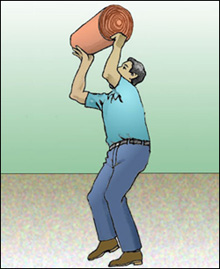 |
| Moving Bulk Fabric and Materials |
 |
|
Potential Hazards:
- When moving bulk materials, employees may have to lift heavy items and lift with awkward postures, which may result in back and shoulder injuries (Fig. 1).
- Lifting objects with arms fully extended or lifting from floor level or above shoulder level may cause injury to the back, shoulders, and arms (Fig. 1).
- Repeated torso twisting while lifting may also cause low back injuries.
|
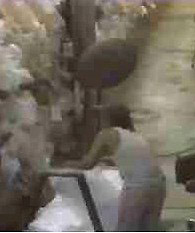
Fig. 1
Lifting from floor level and with awkward postures. |
Possible Solutions:
- Design stations to allow most lifts at waist level.
- Use spring-leveling carts and elevating tables (Fig 2).
- Use mechanical lifts, ceiling tracks or carts to transport the fabric to reduce the risk of injury to the employee.
- Use rollers, which may reduce the need to hold the load while reorienting it, and will reduce force needed to move the load.
- Have fabric rolls delivered in smaller, easier-to-move rolls.
- Remove any barriers that prevent bringing the load closer to the body.
- Train employees to use proper lifting techniques.
|
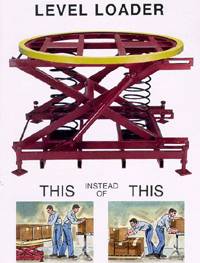
Fig. 2
Design stations to allow most lifts at waist level. |
|
| Moving Cut Fabric |
 |
|
Potential Hazard:
- Employees repeatedly bend at the waist and reach into transportation tubs to load or retrieve cut fabric, causing stress on the back and arms (Fig. 1).
|
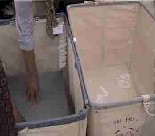
Fig. 1
Reaching into cart.
|
- Employees repeatedly bend to lift bins or bundles of fabric (Fig. 2).
|
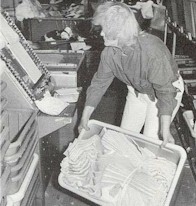
© Earl Dotter |
Fig. 2
Bending to lift bin.
|
- Employees lift bins or bundles over chest height, which may cause injury to the shoulders and back (Fig 3).
|
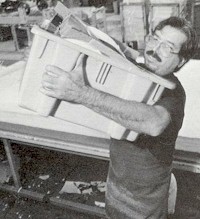
© Earl Dotter |
Fig. 3
Lifting over chest height.
|
- Force applied while pushing or pulling carts containing fabric pieces or scraps may cause injury to the arms and back (Fig. 4).
- Thread and scraps of material may clog the wheels, causing the worker to apply more force when pushing or pulling carts.
|
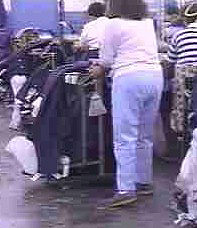
Fig. 4
Pushing carts. |
Possible Solutions:
- Use height-adjustable carts to reduce the need to bend or reach into the carts (Fig 5).
|
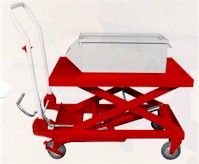
Fig. 5
Height-adjustable cart.
|
- Design stations to allow most lifts at waist level (Fig 6).
- Use bins with good handles to make lifting easier (Fig 6).
|
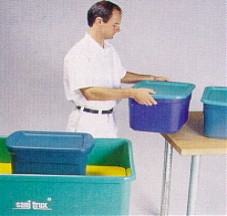
Fig. 6
Use bins with good handles and design stations to allow lifts at waist level.
|
- Remove any barriers that prevent bringing the load closer to the body.
- Train employees to use proper lifting techniques.
|
|
- Use force-reducing castors, wheels, and carts.
- Institute a cart/wheel maintenance program. Well maintained carts require less force to move.
- Emphasize good housekeeping, which keeps debris from building up and blocking moving carts.
|
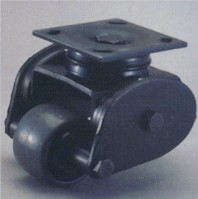
Fig. 7
Force-reducing wheel. |
|
|
